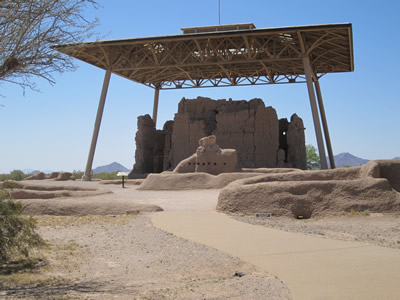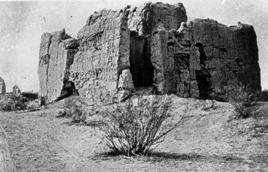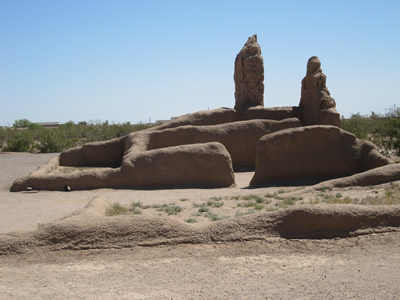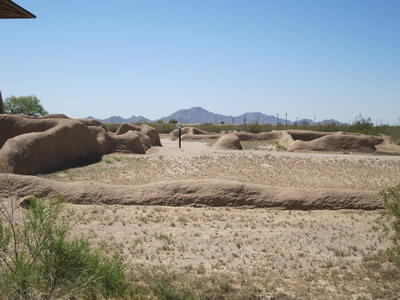
Red Rocks - Southwest trip, 2012
Casa Grande Arizona
| The "Red Rocks" tour was preceded by a rather hectic week: It began in Seattle where I had spent 10 days. I returned to Calfornia on Tuesday, that gave me two days to plant tomatoes, visit my nursing homes and get the house and pets ready our for trip. | |||
|
Marianne Wall |
On Friday I flew to Salt Lake City, Utah to bury my dear friend Marianne on Saturday at the Wight Fort Cemetary in in West Jordan, where she joins some of her ancestors, members of the Wheeler and Gardener families. | 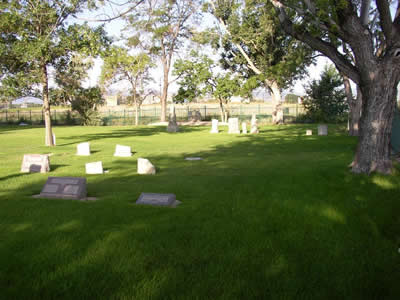 |
|
| Spending Saturday with Anette, Ted, Vicky and Werner gave me the opportunity not only to say good-by to Marianne, but also to learn more about her and her family's pioneer mormon backgground. We visited the historic Wheeler farm as well as the Gardener Mill | |||
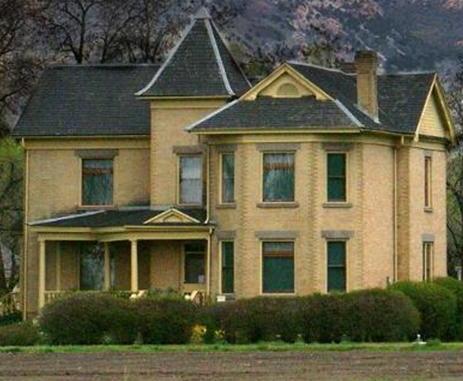 |
On the left is a picture of the historic Wheeler Farm the victorian house - I am not sure when it ceased to be a simple farm house and became an victorian mansion Gardener Mill today is a "themed" shopping and eatery compound
|
 |
|
| On Sunday I flew to Phoenix, Arizona via Denver, Colorado to meet Nick and the car. Now we were finally ready to start the "Red Rocks" tour which will take us to historic sites and beautiful national parks in Arizona, New Mexico, Colorado and, finally again, Utah! We spent the night in Tucson | |||
A free standing roof (a ramada), designed by Frederik Law Olmstead in 1932 protects the ruins against the elements . |
Casa Grande after visiting Casa Grande National monument in Coolidge, AZ. It is is a 4-story, 11-room structure which was built about 700 years ago. It and its surrounding village were abandoned around 1450 CE. A Jesuit missionary, Padre Eusebio Francisco Kino was apprently the first European to discover the ruin in 1694. He named it Casa Grande. In 1892, President Benjamin Harrison proclaimed the site as the first prehistoric and cultural reserve in the US, it was designated a National Monument in 1918 |
|
|
| Above a picture of Casa Grande in 1890 before stabiliztion began. | |||
 |
|
|
|
| The ruin of the "great house" is the only actual structure to survive (somewhat) but when people lived in this area, there was a sizeable village here, above are the excavated foundations and remnants of walls of some of the individual buildings, as well as the large ball court. | |||
| Archeological evidence has shown that the ancient desert people used an extensive system of canals to irrigate fields and occupied the area for about a thousand years. Construction materials for not only the Great House, but all buildings was 'Caliche' , a naturally occurring soil consisting of clay, sand and calcium carbonate found in the deserts of the southwest. An estimated six million pounds of caliche were used in the construction of the Casa Grande. Supports for the individual floors and ceiling were provided by tree trunks and branches such as Cedar and Pinon which had to be carried from about 75 miles away, in addition to mesquite branches and well as Saguaro cactus ribs. A very good and detailed description of the construction practices used by the Sonoran desert people can be found in a book by the first superintendent of the monument, Frank Pinckley: Casa Grande National Monument (Frank and Edna Pinckley, 1931)
|
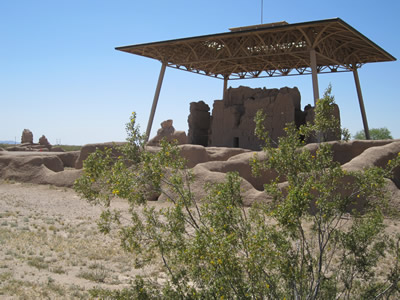 |
||
Casa Grande Ruins National Monument
EditRegion4

